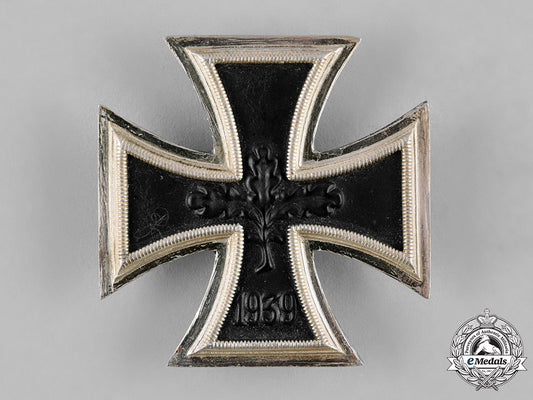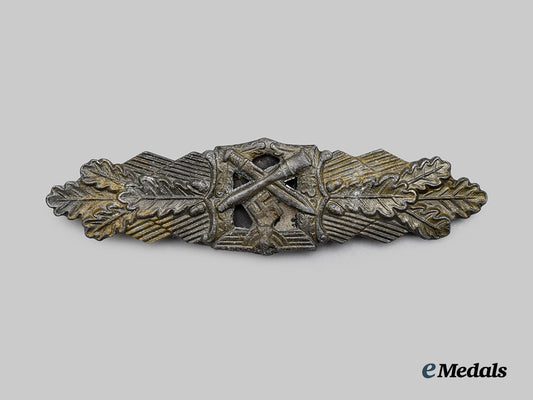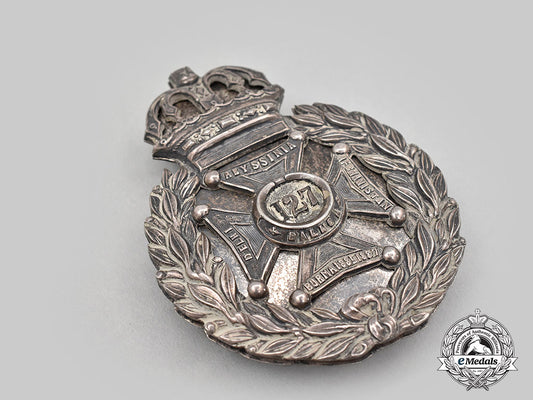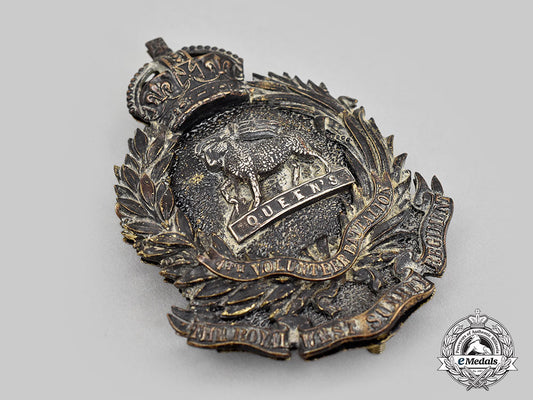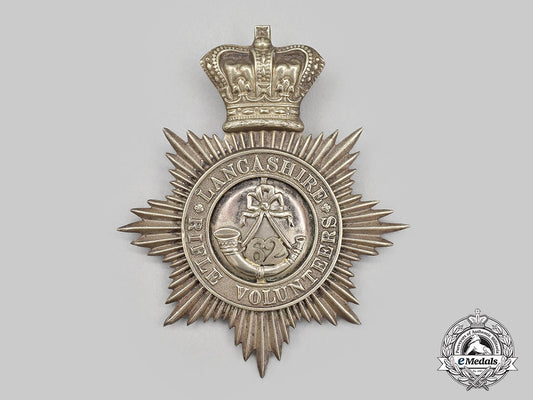
LOADING ...
In response to evolving domestic opinion, eMedals Inc has made the conscious decision to remove the presentation of German Third Reich historical artifacts from our online catalogue. For three decades, eMedals Inc has made an effort to preserve history in all its forms. As historians and researchers, we have managed sensitive articles and materials with the greatest of care and respect for their past and present social context. We acknowledge the growing sentiments put forth by the Canadian public and have taken proactive actions to address this opinion.










A Wehrpaß To Battle Of Britain Luftwaffe Pilot/Radio Operator & Gold Squadron Clasp Recipient
A Wehrpaß To Battle Of Britain Luftwaffe Pilot/Radio Operator & Gold Squadron Clasp Recipient
SKU: ITEM: G28063
Current Bid:
Your Max Bid:
Bid History:
Time Remaining:
Couldn't load pickup availability
Shipping Details
Shipping Details
eMedals offers rapid domestic and international shipping. Orders received prior to 12:00pm (EST) will be shipped on the same business day.* Orders placed on Canadian Federal holidays will be dispatched the subsequent business day. Courier tracking numbers are provided for all shipments. All items purchased from eMedals can be returned for a full monetary refund or merchandise credit, providing the criteria presented in our Terms & Conditions are met. *Please note that the addition of a COA may impact dispatch time.
Shipping Details
eMedals offers rapid domestic and international shipping. Orders received prior to 12:00pm (EST) will be shipped on the same business day.* Orders placed on Canadian Federal holidays will be dispatched the subsequent business day. Courier tracking numbers are provided for all shipments. All items purchased from eMedals can be returned for a full monetary refund or merchandise credit, providing the criteria presented in our Terms & Conditions are met. *Please note that the addition of a COA may impact dispatch time.
Description
Description










You May Also Like
Germany, Federal Republic. A 1939 Iron Cross I Class, Post-1957 Reissue
G41269
Germany, Wehrmacht. A Close Combat Clasp, Gold Grade, by Rudolf Souval
G57059
United Kingdom. A Silver 127th Balach Light Infantry Cross Belt Plate with Guelphic Crown, c.1903
GB7851
United Kingdom. A 4th Volunteer Battalion, Royal West Surrey Regiment Helmet Plate with King's Crown, c.1910
GB7806
United Kingdom. A 62nd Lancashire Rifle Volunteer Corps Helmet Plate, c.1880
GB7804
-
Germany, Federal Republic. A 1939 Iron Cross I Class, Post-1957 Reissue
G41269
Add to CartRegular price $70 USDRegular price $0 USD Sale price $70 USDUnit price / per -
Germany, Wehrmacht. A Close Combat Clasp, Gold Grade, by Rudolf Souval
G57059
Add to CartRegular price $350 USDRegular price $0 USD Sale price $350 USDUnit price / per -
United Kingdom. A Silver 127th Balach Light Infantry Cross Belt Plate with Guelphic Crown, c.1903
GB7851
Add to CartRegular price $350 USDRegular price $0 USD Sale price $350 USDUnit price / per -
United Kingdom. A 4th Volunteer Battalion, Royal West Surrey Regiment Helmet Plate with King's Crown, c.1910
GB7806
Add to CartRegular price $370 USDRegular price $0 USD Sale price $370 USDUnit price / per -
United Kingdom. A 62nd Lancashire Rifle Volunteer Corps Helmet Plate, c.1880
GB7804
Add to CartRegular price $240 USDRegular price $0 USD Sale price $240 USDUnit price / per
Do you have a similar item you are interested in selling?
Please complete the form and our client care representatives will contact you.
Sell ItemSell to eMedals
Starting the Selling Process
To begin the sale of your item(s), in house experts will need to carry out an initial evaluation to judge how to proceed in the sale. Here, we will determine the authenticity as well as the approximate value of the item(s) using images and descriptions.
Initial Evaluation
In order to better assess how to proceed with your sale, an initial evaluation must be completed of your items. A quick and simple method, upload multiple images of your item(s) using our online submission form with any relevant comments. This form can be found below. Otherwise, we are happy to assess your item(s) by email, phone, or in office.
In House Assessment
Once we have completed an initial evaluation, you will be contacted by an eMedals representative, either by email or phone, to discuss shipment. All items offered on eMedals.com are subject to in house inspection and evaluation prior to listing. This process is to ensure all items offered are authentic, described correctly, properly researched, and listed using professionally photography.
Shipment of Your Item(s)
To ship your item(s), please ensure that each item is packed carefully and securely. If you have any questions or concerns regarding the shipment process, including those about methods, customs, insurance, please contact our general inbox info@emedals.comfor immediate assistance. Shipping Address: 3245 Harvester RoadUnit 15Burlington, OntarioL7N 3T7 Canada
Offer
eMedals is happy to directly purchase medals and militaria from both the public and collectors alike. Here, once an item(s) has been assessed using images, delivered to our office and inspected, a purchase offer is then made. If accepted, payment is made in a timely fashion making an eMedals purchase a prompt transaction.
Bid History

Item : G28063
A Wehrpaß To Battle Of Britain Luftwaffe Pilot/Radio Operator & Gold Squadron Clasp Recipient
| Bidder | Amount | Submitted |
|---|
Buyer's Premium
All winning bids are subject to a Buyer's Premium of 22% which is in addition to the final hammer price.
Twenty-Two Percent (22%) of the Hammer Price
Confirm your bid of USD?
By submitting this bid, you agree to eMedals Inc.’s Terms & Conditions.
Not Verified !
Your account is currently not verified to participate in auctions. Please log in, or apply for verification Here or Contact us for more information.
Sign in- Choosing a selection results in a full page refresh.
- Opens in a new window.




















